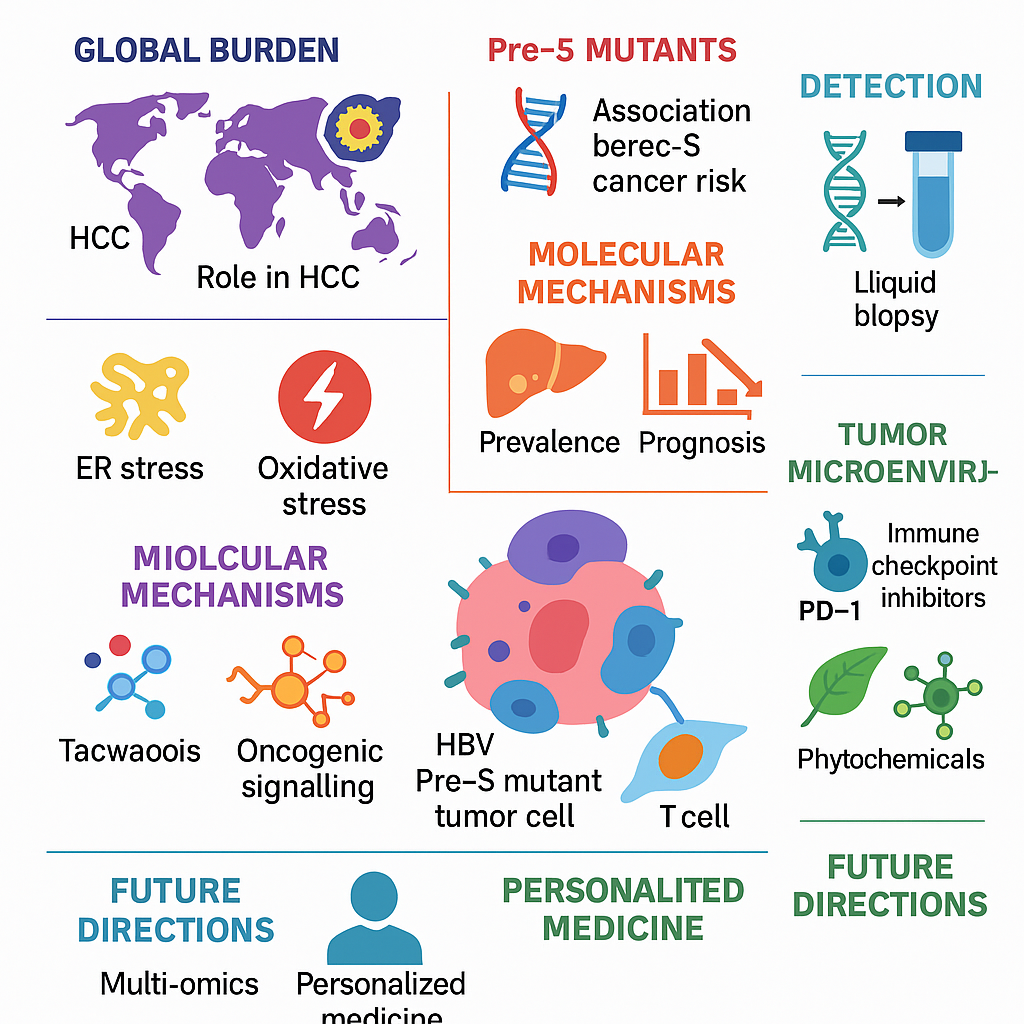HBV Pre-S Mutants and Hepatocellular Carcinoma: New Molecular Pathways, Clinical Implications, and Therapeutic Horizons (2020–2025)
Keywords:
- Hepatitis B Virus (HBV), Pre-S Mutants, Hepatocellular Carcinoma (HCC), Oncogenesis, ER Stress, Oxidative DNA Damage, HBV Genotypes, Biomarkers, Next-Generation Sequencing (NGS), Liquid Biopsy, Immune Evasion, Precision Oncology, Tumour Recurrence, Pre-S1 Deletion, Pre-S2 Deletion.
Abstract
Hepatitis B virus (HBV) pre-S mutants, particularly deletions in the pre-S1 and pre-S2 regions of the viral envelope gene, have emerged as critical molecular drivers of hepatocellular carcinoma (HCC). These mutants contribute to liver carcinogenesis by inducing endoplasmic reticulum (ER) stress, oxidative DNA damage, and activating multiple oncogenic signaling pathways including PI3K/Akt/mTOR, NF-κB, and COX-2. Epidemiological data from 2020–2025 highlight their high prevalence in East Asian populations, especially in HBV genotypes B and C, with strong associations to tumor development, recurrence, and poor prognosis. Advancements in next-generation sequencing and liquid biopsy technologies have enabled the non-invasive detection of pre-S mutants, enhancing their potential as biomarkers for early diagnosis, risk stratification, and therapeutic monitoring. Preclinical and clinical research has also identified novel therapeutic strategies targeting mutant-induced stress pathways, immune evasion mechanisms, and metabolic reprogramming. The integration of pre-S mutant profiling into precision oncology approaches is anticipated to transform HCC management, particularly in HBV-endemic regions.






